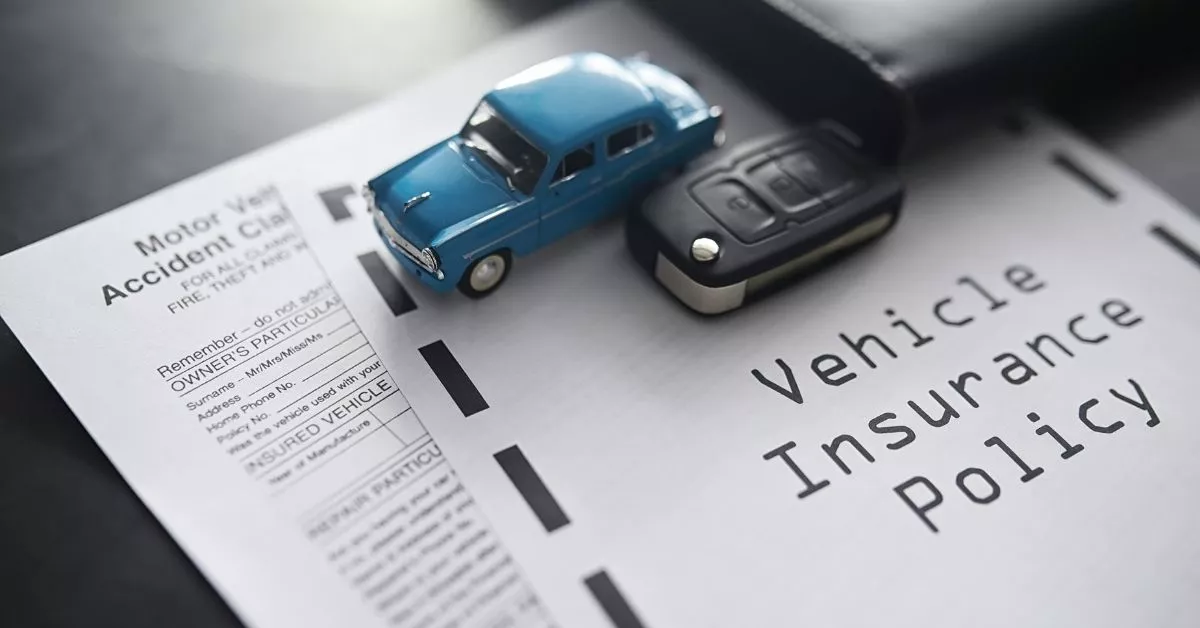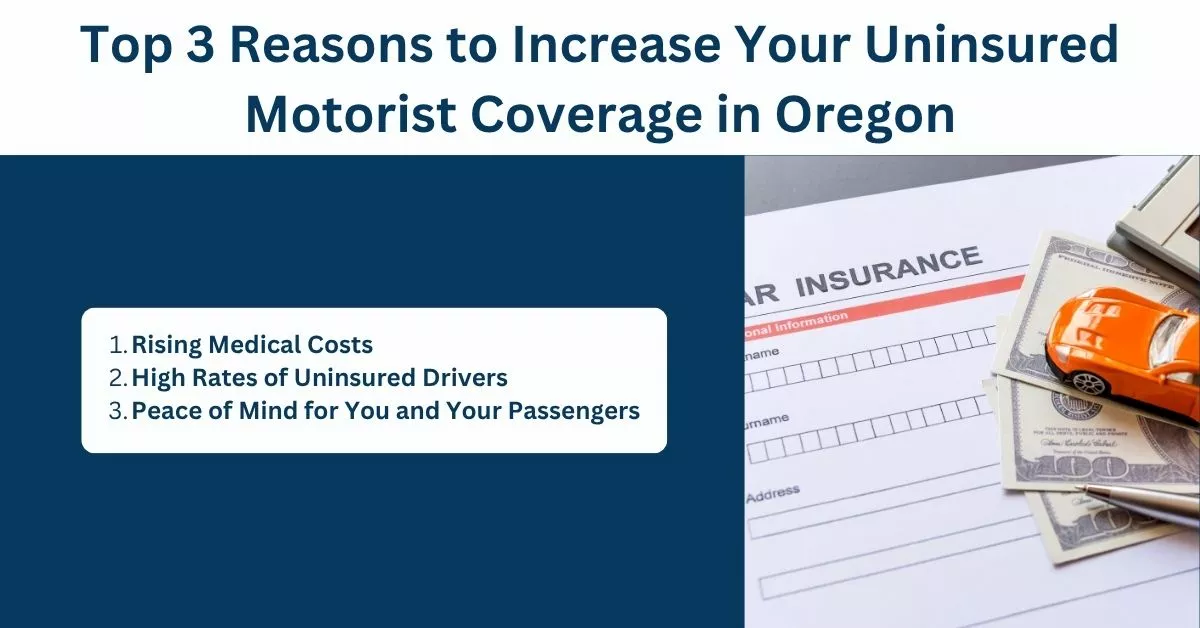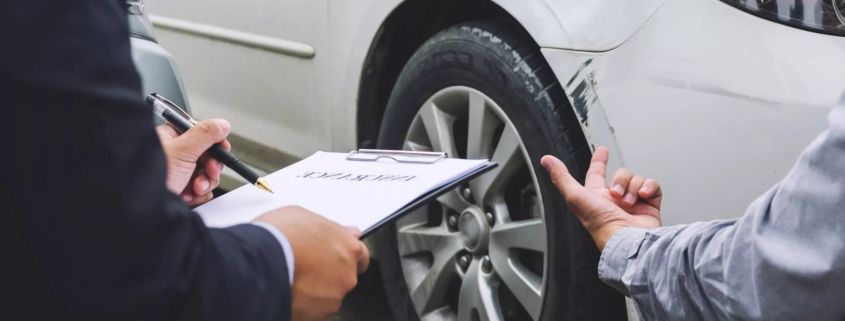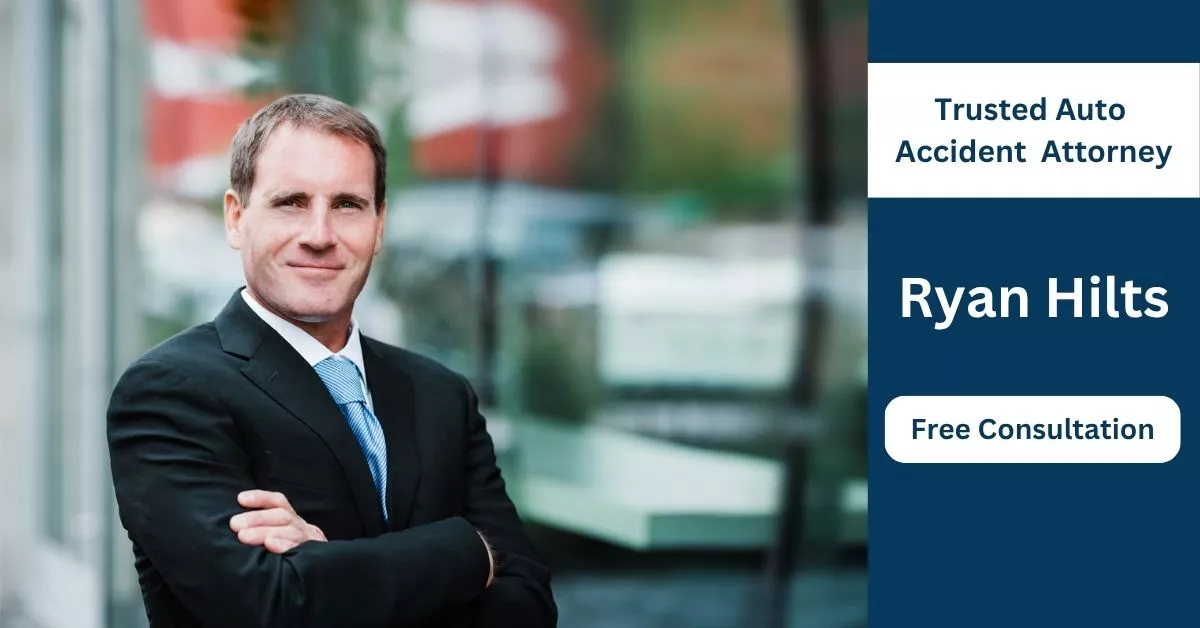A serious car accident is traumatic enough, but discovering the at‑fault driver has no insurance can make the situation feel overwhelming. The Insurance Research Council reports that about 15.4 percent of motorists nationwide were uninsured in 2023, and Oregon’s rate is roughly 14.7 percent. That means nearly one in seven cars around you may be driving without coverage. If those drivers cause a crash, who pays for your medical bills, vehicle repairs and lost wages?
In Oregon, drivers are required to carry liability and uninsured motorist (UM) coverage as part of their auto policy. Yet accidents involving uninsured drivers still happen. This guide explains, step by step, what happens when the other driver doesn’t have insurance and what you should do immediately afterward. We’ll walk through the legal requirements, how to file a UM claim with your own insurer and proactive tips to protect yourself. If you need personalized guidance, Ryan Hilts Law’s Oregon car accident attorney page offers resources and free consultations.
Also Read
- Car Accident with No Insurance in Oregon – What Are the Risks?
- Driving Without Auto Insurance
- Do I Need to Get a Lawyer for a Wreck That Was My Fault?
TL;DR
If you’re hit by an uninsured driver in Oregon, remain calm and stay at the scene. Call 911, exchange names and contact details, gather photos and witness information, and file the Oregon Traffic Accident & Insurance Report within 72 hours. Since Oregon law requires uninsured motorist coverage, your own policy should step in to cover medical bills and losses. Notify your insurer promptly, keep detailed records of expenses, and consult a lawyer before giving recorded statements or accepting a low settlement offer.
Key Takeaways
- Oregon Insurance Basics: Every driver must carry liability and uninsured motorist coverage. Driving without proof of insurance can result in fines from $130 up to $1,000 and a suspended license.
- Act Quickly: You must report accidents to the police and file a DMV accident report within 72 hours. Failing to report on time can jeopardize your claim.
- Your Policy Steps In: Oregon policies include Personal Injury Protection (PIP) covering up to $15,000 in medical expenses and wage loss. Uninsured motorist (UM) coverage compensates for bodily injury and property damage caused by uninsured drivers.
- Don’t Settle Too Soon: Insurance adjusters often offer quick, low settlements. Consult a personal injury attorney before signing anything.
- Increase Your Protection: Consider raising your UM limits and learn about Oregon’s “no‑pay, no‑play” rule that limits compensation for uninsured claimants.

Understanding Oregon’s Insurance Requirements
Oregon has some of the strictest auto insurance laws in the country. The Oregon Revised Statutes 742.502 state that every motor vehicle liability policy must include uninsured motorist coverage and that the limits must match your bodily injury liability limits. Drivers must also carry proof of insurance and produce it when requested by law enforcement or after an accident. Failure to carry proof can lead to fines ranging from $130 to $1,000, a license suspension and the requirement to file an SR‑22 certificate for three years.
Despite these requirements, tens of thousands of Oregonians drive without insurance. A recent study showed that around 14.7 percent of Oregon motorists are uninsured. Nationwide, the figure climbs to 15.4 percent. These statistics highlight why carrying adequate UM coverage is so important: the odds of being struck by an uninsured driver are higher than many people realize.
What Does Uninsured Motorist Coverage Do?
Uninsured motorist (UM) coverage protects you when the at‑fault driver has no insurance. It steps into the shoes of the other driver’s liability policy and pays for your medical expenses, lost wages and pain and suffering up to your policy limits. Oregon requires drivers to purchase UM coverage equal to their liability limits. Underinsured motorist (UIM) coverage applies when the at‑fault driver’s insurance isn’t enough to cover your losses.
Personal Injury Protection (PIP) is another mandatory coverage in Oregon. It pays medical expenses, hospital bills, dental costs and even a portion of your lost wages regardless of who caused the accident. PIP benefits can provide up to $15,000of coverage for medical and essential services. This no‑fault coverage is critical because it ensures that your initial medical bills are paid quickly while liability is being determined.
Immediate Steps at the Scene of the Accident
Being struck by an uninsured driver can send adrenaline racing, but the steps you take in the minutes after the crash can significantly influence your ability to recover compensation later. Here’s what to do:
- Stay at the scene and ensure safety. Under Oregon law you must remain at the scene of the collision, exchange names, addresses and insurance information with the other driver and render aid if necessary. If vehicles can’t be moved, turn on hazard lights and set out flares or reflective triangles.
- Call 911. Even for seemingly minor collisions, call law enforcement. A police report provides an objective record of what happened and will be essential when you file a UM claim.
- Check for injuries and seek medical attention. If anyone is hurt, call for medical assistance. Some injuries, such as concussions or soft‑tissue damage, may not be apparent immediately. Getting checked out promptly also creates a medical record that ties your injuries to the crash.
- Document the scene. Use your smartphone to photograph the vehicles from multiple angles, showing damage, license plates and the surrounding area. Take wide shots that capture road signs, traffic lights, skid marks and weather conditions. Collect the names and contact details of any witnesses.
- Don’t accept cash or admit fault. An uninsured driver might offer to pay you on the spot to avoid legal consequences. Politely decline and stick to the facts when speaking to police or bystanders. Admitting fault can undermine your claim later.
Filing an Oregon Traffic Accident & Insurance Report
Oregon requires drivers involved in a collision resulting in injury, death or property damage above $1,500 to file the Oregon Traffic Accident & Insurance Report within 72 hours. This form is filed with the Department of Motor Vehicles (DMV) even if the police came to the scene. Failing to file can lead to license suspension and complicate your insurance claim. For hit‑and‑run accidents and situations involving uninsured drivers, you must also report the incident to law enforcement within 72 hours and notify your insurer within 30 days.
You can download the report from the Oregon DMV website and file online or mail it in. Keep a copy for your records, as your insurance company will likely request it. This form captures critical details about the accident, including contact information, vehicle damage, injuries and insurance status.
How to File an Uninsured Motorist Claim
After you’ve reported the accident to police and filed the DMV report, your next step is to notify your insurance company. Explain that the at‑fault driver lacks coverage and that you intend to file a UM claim. Here’s how to navigate the process:
Gather documentation. Your insurer will ask for a copy of the police report, the DMV accident report, photographs of the scene, repair estimates, medical records and documentation of any lost wages. The more detailed and organized your documentation, the easier the claim process.
Understand your coverage limits. Review your declarations page (often called the “dec page”) to confirm your UM limits. In Oregon, these limits must at least match your liability limits, but many drivers opt for higher coverage to protect against catastrophic injuries.
Watch out for adjuster tactics. Insurance adjusters represent the insurer’s interests and may pressure you to provide a recorded statement or accept a low settlement. Remember, you are not obligated to give a recorded statement to the other driver’s insurer, and you should be careful even when dealing with your own insurer. If you’re unsure about any request, speak with an attorney first.
Prepare for arbitration. If the claim cannot be settled, Oregon law typically requires UM disputes to go through binding arbitration rather than a jury trial. An experienced personal injury lawyer can help you assemble evidence, retain experts and present your case before an arbitrator.
Dealing with Medical Bills: PIP and Health Insurance
PIP benefits begin paying for your medical treatment immediately, regardless of who caused the crash. In Oregon, PIP covers up to $15,000 in medical expenses incurred within one year of the accident and may cover a portion of your lost wages. If your injuries exceed PIP limits, your health insurance may cover additional costs, but your health insurer may have the right to recover those costs from your UM settlement. Keeping detailed records of all treatments, prescriptions and out‑of‑pocket expenses is crucial for reimbursement.
Legal Options Beyond Your Insurance
Uninsured motorist coverage isn’t the only route to compensation. Victims may sue the uninsured driver personally, but if the driver lacks assets or income, collecting a judgment can be difficult. Oregon also follows a “no‑pay, no‑play” rule: if you were driving uninsured when the accident occurred, you’re generally barred from recovering non‑economic damages like pain and suffering, though you can still seek economic damages for medical bills and lost wages. There are exceptions, such as when the at‑fault driver was drunk or driving recklessly, but those cases can be complex.
If the uninsured driver flees the scene, your UM coverage may still apply—provided you report the hit‑and‑run to police within 72 hours and can provide corroborating evidence. Oregon imposes a two‑year statute of limitations on personal injury claims, so it’s important to take legal action promptly.
Hiring an attorney experienced in uninsured motorist claims can help you evaluate whether a lawsuit is worthwhile, negotiate with insurers and ensure you meet all filing deadlines. Ryan Hilts Law offers free consultations to help you understand your options and the potential value of your claim.

Top 3 Reasons to Increase Your Uninsured Motorist Coverage in Oregon
Reason #1: Rising Medical Costs– Serious injuries can quickly exceed Oregon’s minimum UM limits of $25,000 per person and $50,000 per accident. Hospital stays, surgeries, rehabilitation and long‑term therapy often cost far more than these minimums. Higher UM limits protect you from paying medical bills out of pocket if the other driver has no coverage.
Reason #2: High Rate of Uninsured Drivers– With roughly 14.7 percent of Oregon motorists driving uninsured, the risk of being hit by an uninsured driver is significant. Nationally, about 15.4 percent of drivers are uninsured, making robust UM coverage essential for peace of mind on any road trip.
Reason #3: Peace of Mind for You and Your Passengers– UM coverage doesn’t just protect you. It often extends to passengers in your vehicle and sometimes to household family members. UM benefits also apply in hit‑and‑run scenarios when reported properly. Raising your UM limits ensures that everyone in your car has adequate protection.
Protecting Yourself Before a Crash
While you can’t control other drivers’ decisions to go uninsured, you can take steps to mitigate the risk:
Review your policy annually. Confirm that your liability, UM and UIM limits are sufficient for your financial situation. Consider an umbrella liability policy for additional protection.
Carry proof of insurance. Always keep a current insurance card in your vehicle or digital proof on your phone. Failure to present proof during a traffic stop or accident can lead to fines and license suspension.
Prepare an accident kit. Stock your glove compartment with a notepad, pen, emergency contact numbers and a printed accident checklist. Add flares or reflective triangles to your trunk to alert other drivers in case of a collision.
Document the scene. Consider installing a dashcam to record accidents and near misses. Dashcam footage can corroborate your account of the crash if the other driver disputes what happened.
Educate yourself. Ryan Hilts Law offers resources like the Dos and Don’ts Following a Car Accident guide to help you prepare.
Conclusion
Getting into a collision is stressful—discovering that the driver who hit you lacks insurance adds another layer of anxiety. By understanding Oregon’s insurance laws, following the proper steps after a crash and knowing how to file an uninsured motorist claim, you can protect your health and financial future. Oregon’s mandatory UM coverage and PIP benefits exist to safeguard victims, but navigating insurance claims and potential lawsuits alone can be daunting.
If you or a loved one has been injured by an uninsured driver, the team at Ryan Hilts Law can help. Our attorneys have nearly two decades of experience representing Oregonians in car accident cases. We’ll answer your questions, handle the paperwork and fight for the compensation you deserve. Visit our contact page to schedule a free consultation today.
Frequently Asked Questions
What happens if the at‑fault driver has no insurance and I don’t have UM coverage?
You can sue the uninsured driver personally for your losses, but collecting damages is often difficult if they have few assets. Without UM coverage, you may be responsible for your own medical bills and repairs.
Do I have to pay a deductible when filing a UM claim?
UM coverage typically covers bodily injury without a deductible. If you have uninsured motorist property damage or collision coverage, a deductible may apply when repairing your vehicle.
Will making a UM claim raise my insurance premiums?
No. Oregon law prohibits insurers from raising premiums when you file a claim under your uninsured motorist coverage for an accident that wasn’t your fault.
How long do I have to file a claim?
Oregon’s statute of limitations gives you two years from the date of the accident to file a personal injury lawsuit. However, you must file the DMV accident report within 72 hours and notify your insurer promptly.
Can passengers and pedestrians use my UM coverage?
Yes. Uninsured motorist benefits generally extend to passengers in your vehicle and sometimes to household family members. PIP benefits also cover pedestrians injured by a motor vehicle



